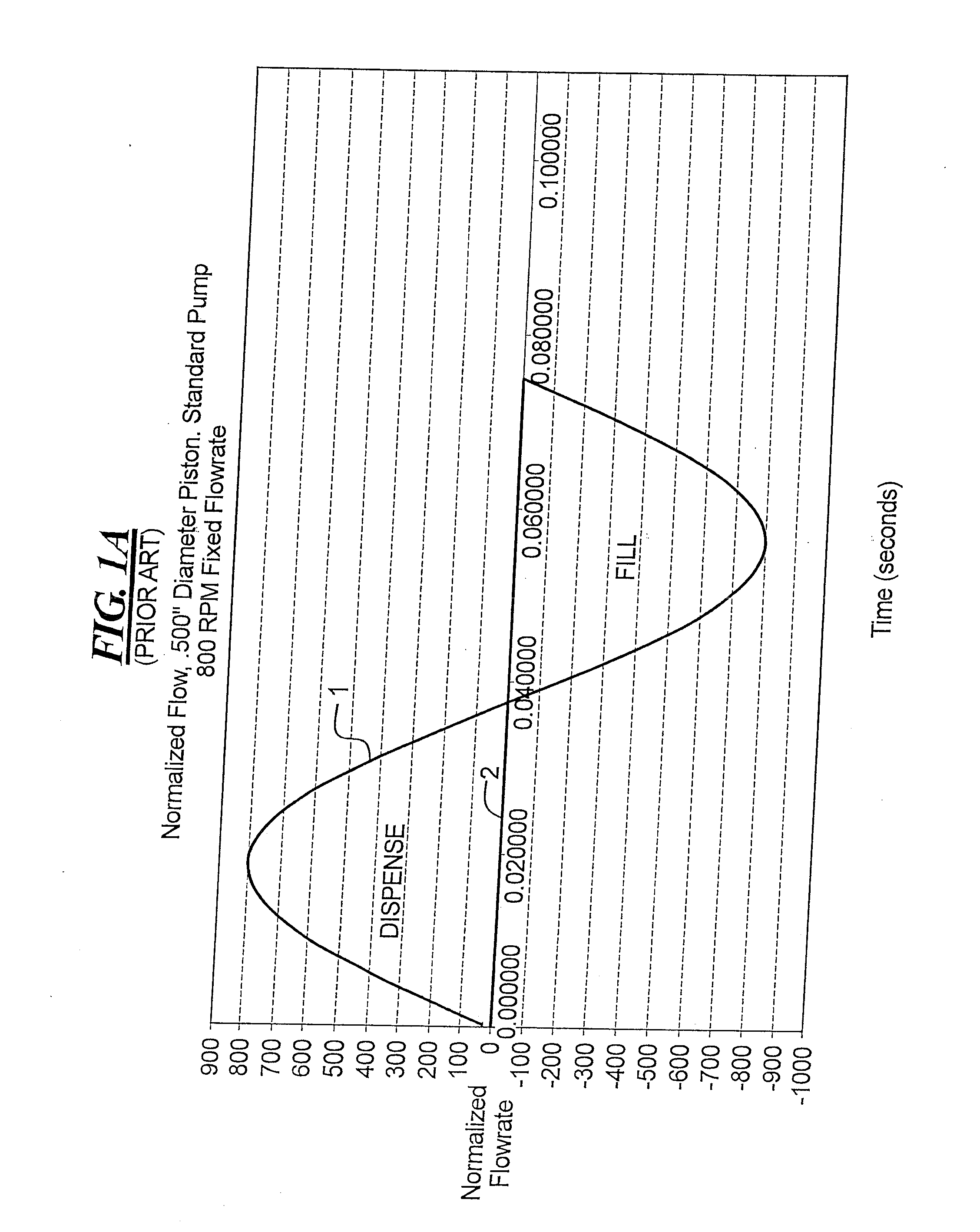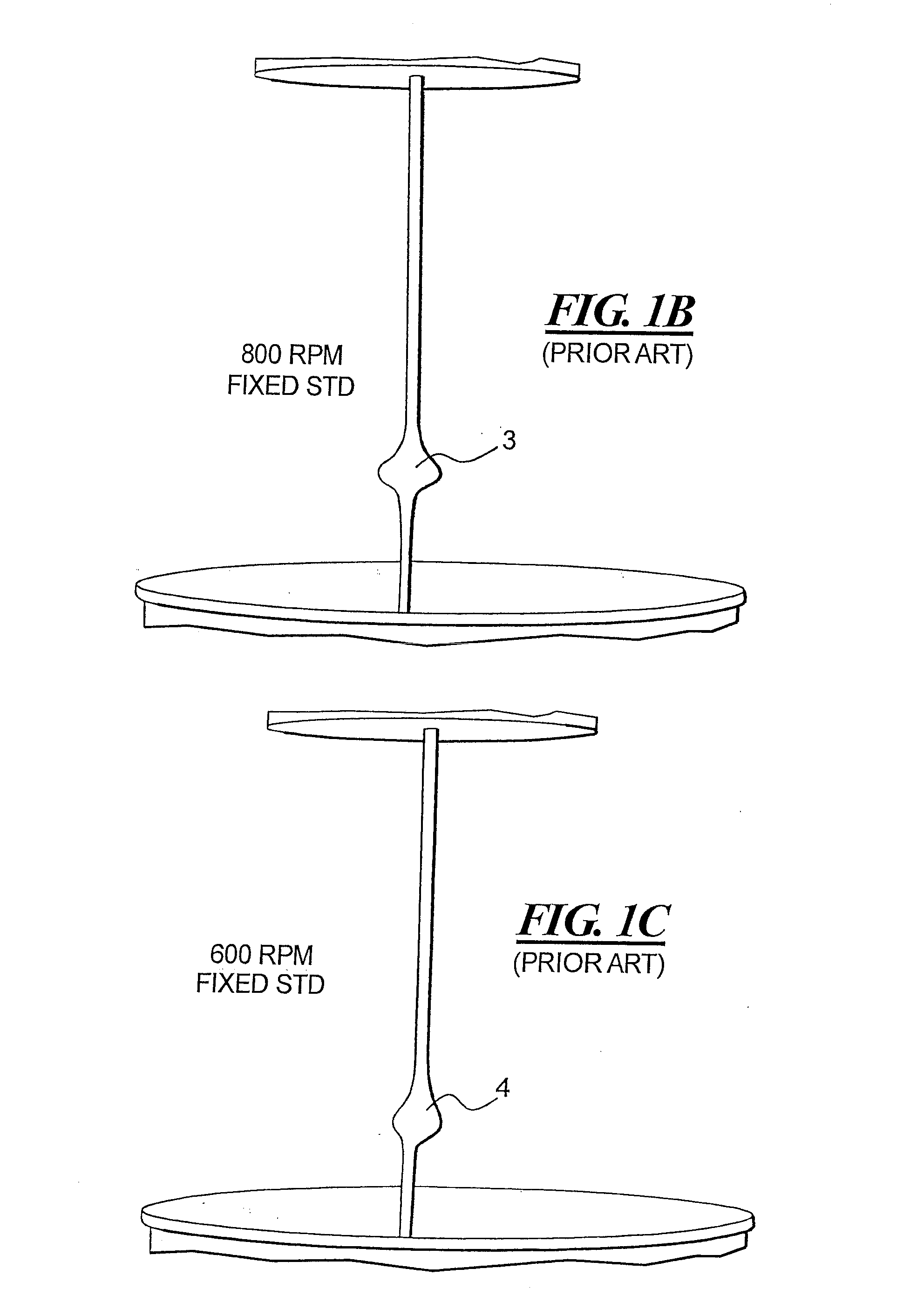Dual chamber mixing pump
a mixing pump and chamber technology, applied in the direction of piston pumps, positive displacement liquid engines, liquid fuel engines, etc., can solve the problems of difficult use of constant motor speed, difficult use of partial revolutions to accurately disperse fluid,
- Summary
- Abstract
- Description
- Claims
- Application Information
AI Technical Summary
Benefits of technology
Problems solved by technology
Method used
Image
Examples
Embodiment Construction
[0064]Turning first to FIG. 1D, a prior art piston 10 is shown with a narrower portion 11 that is linked or coupled to the motor. The wider section 12 is the only section disposed within the pump chamber. The wider section 11 includes a flattened portion 13 which is the active pumping area. The differences between the prior art piston 10 of FIG. 1D and the pistons of this disclosure will be explained in greater detail below.
[0065]Turning to FIGS. 3A-3D, a nutating pump 20 is shown. The pump 20 includes a rotating and reciprocating piston 10A that is disposed within a pump housing 21. The pump housing 21, in the embodiment illustrated in FIGS. 3A-3B also includes an end cap or head 22. The housing or casing 21 may also be connected to an intermediate housing 23 used primarily to house the coupling 24 that connects the piston 10a to the drive shaft 25 which, in turn, is coupled to the motor shown schematically at 26. The coupling 24 is connected to the proximal end 26 of the piston 10...
PUM
 Login to View More
Login to View More Abstract
Description
Claims
Application Information
 Login to View More
Login to View More - R&D
- Intellectual Property
- Life Sciences
- Materials
- Tech Scout
- Unparalleled Data Quality
- Higher Quality Content
- 60% Fewer Hallucinations
Browse by: Latest US Patents, China's latest patents, Technical Efficacy Thesaurus, Application Domain, Technology Topic, Popular Technical Reports.
© 2025 PatSnap. All rights reserved.Legal|Privacy policy|Modern Slavery Act Transparency Statement|Sitemap|About US| Contact US: help@patsnap.com



